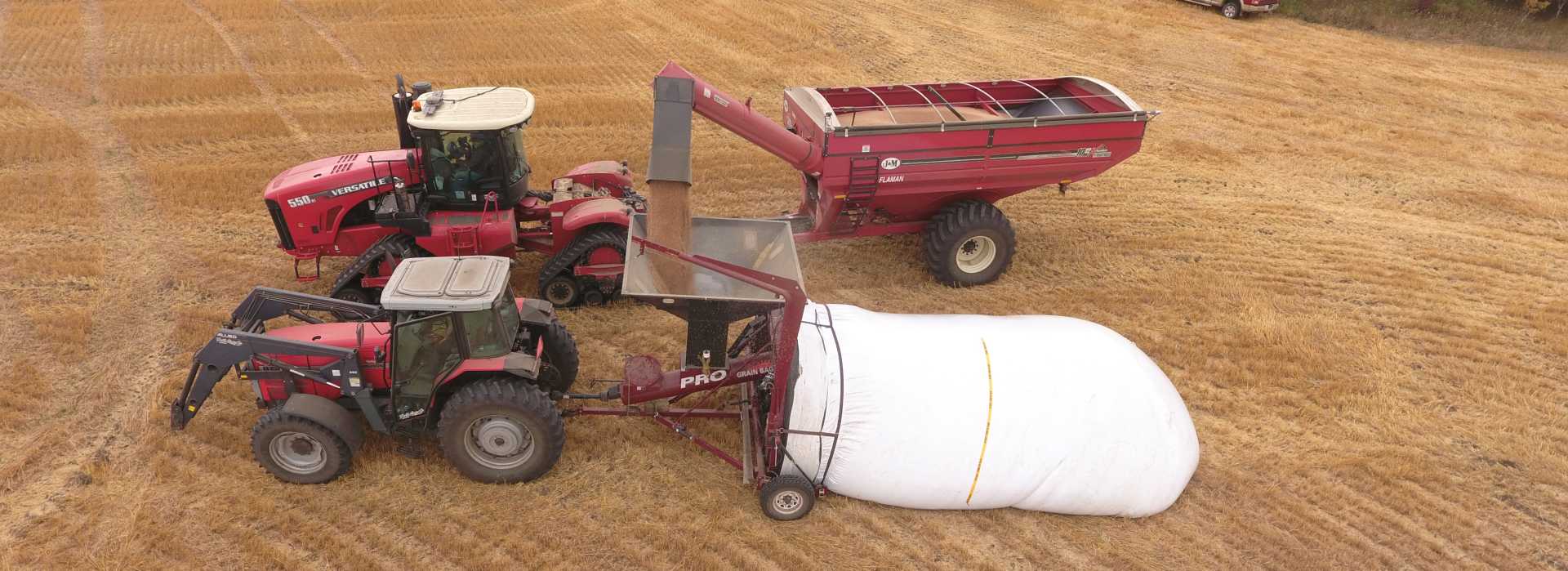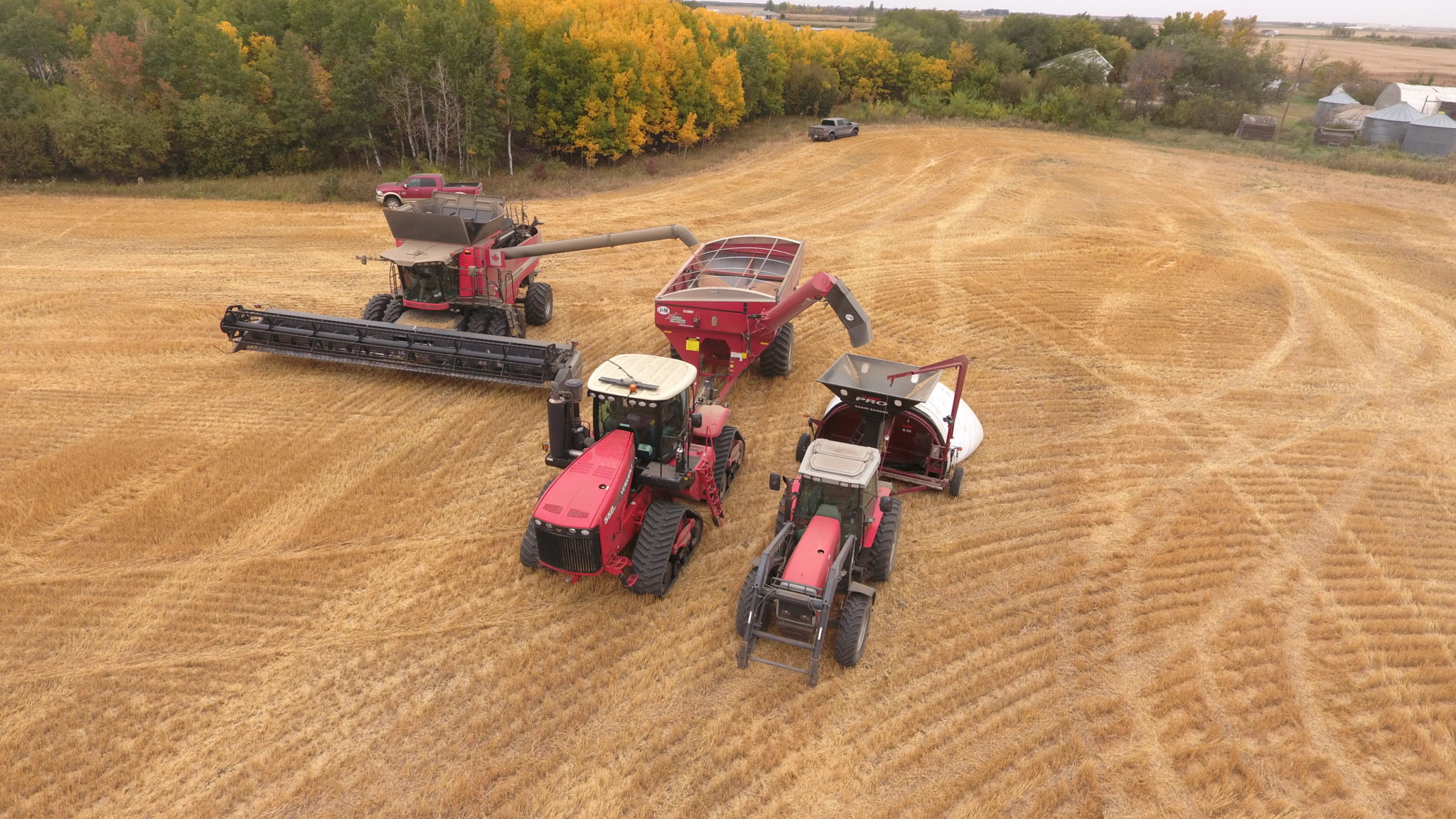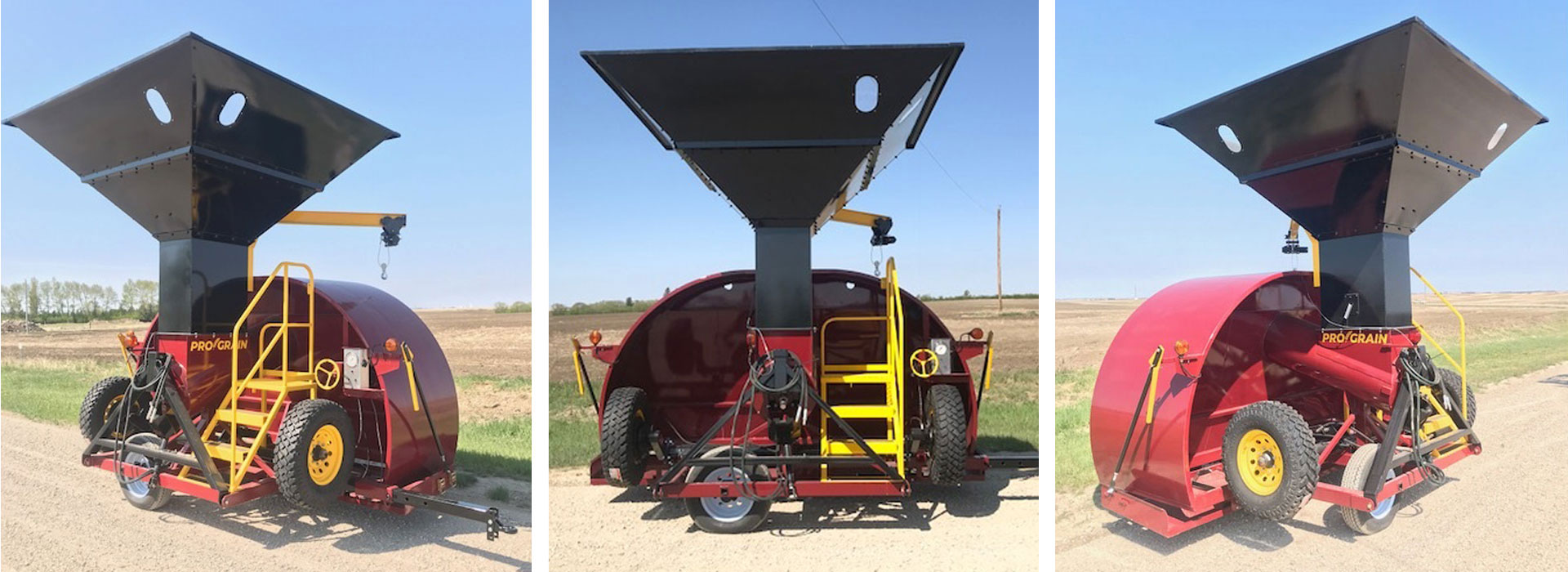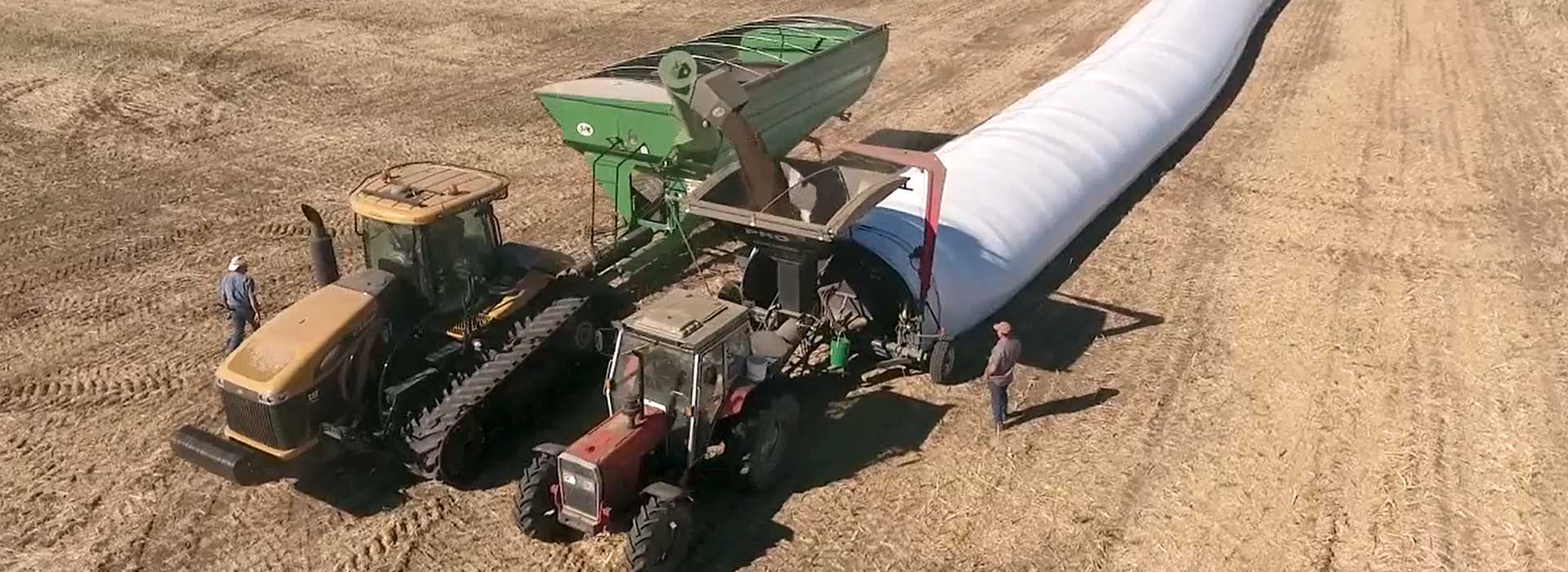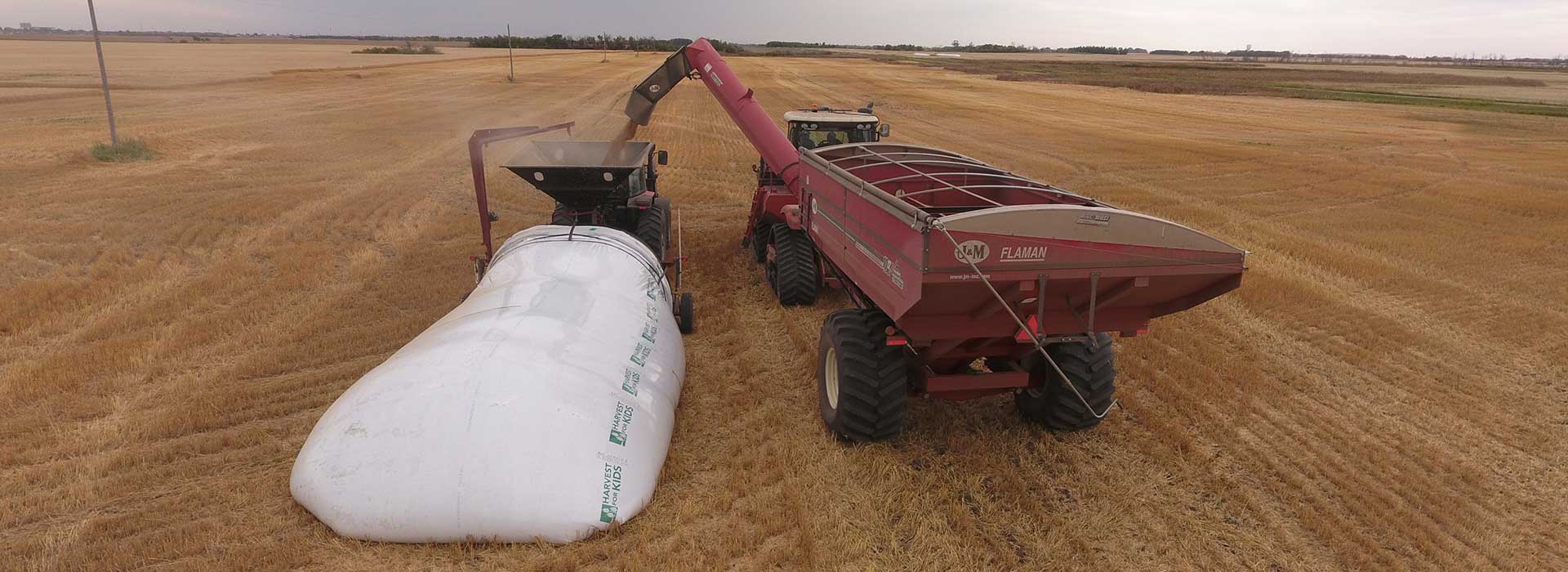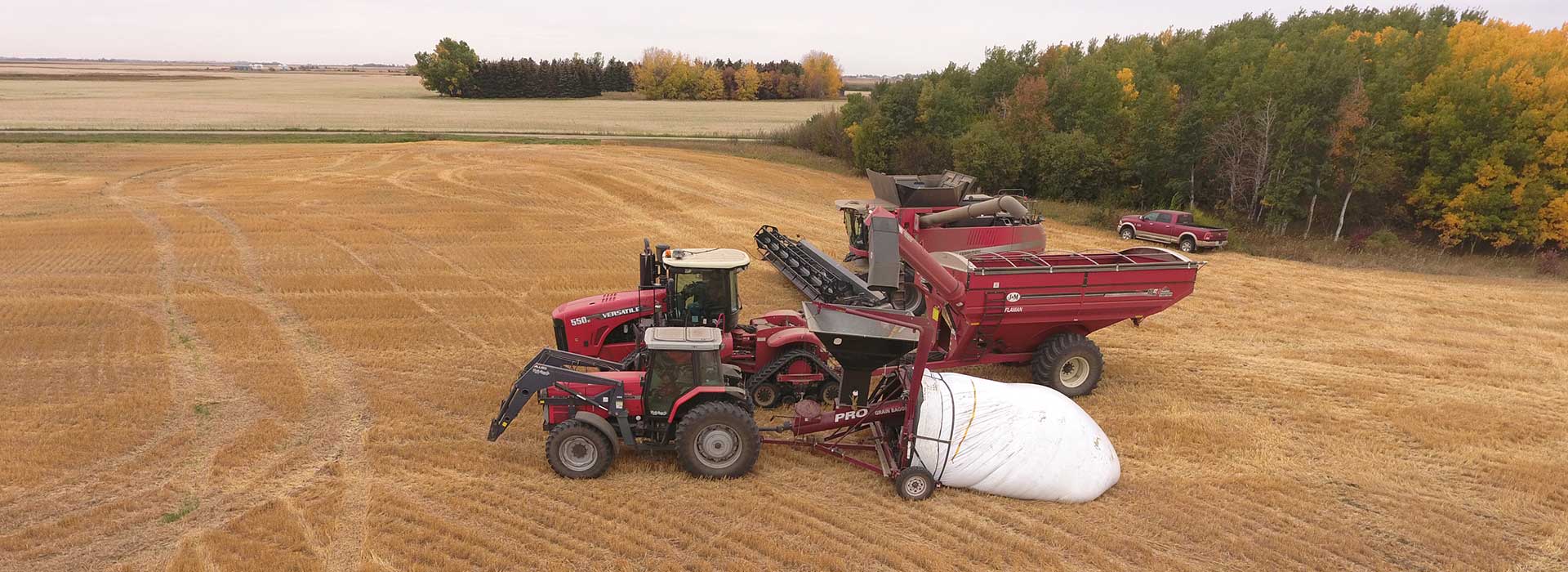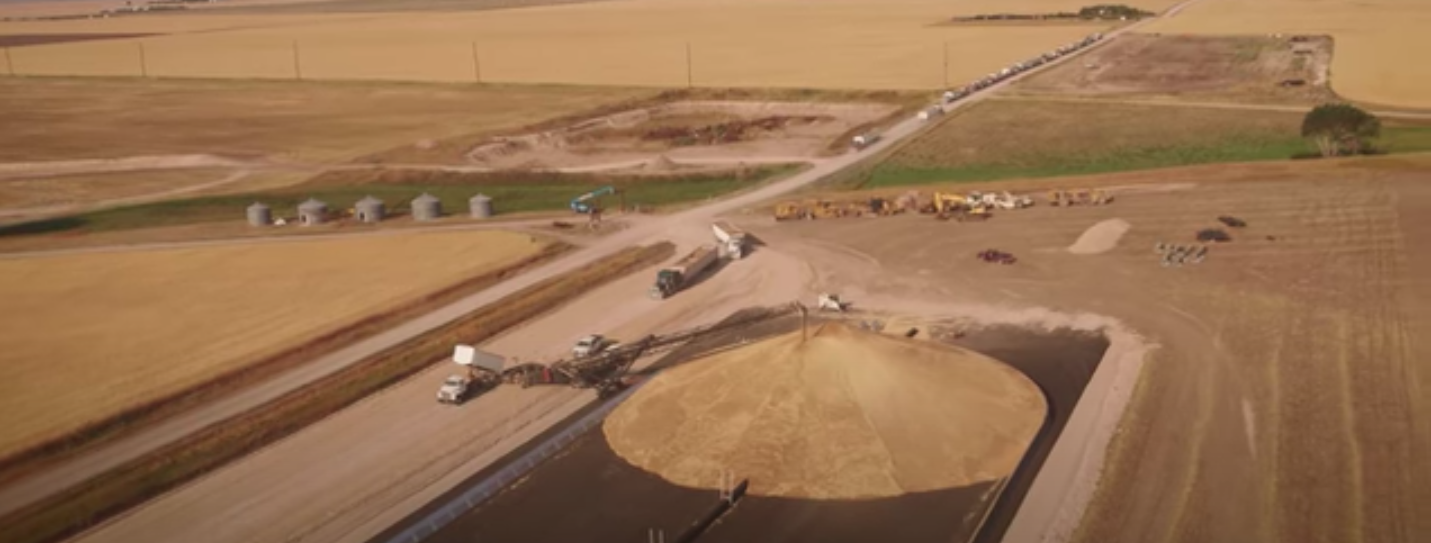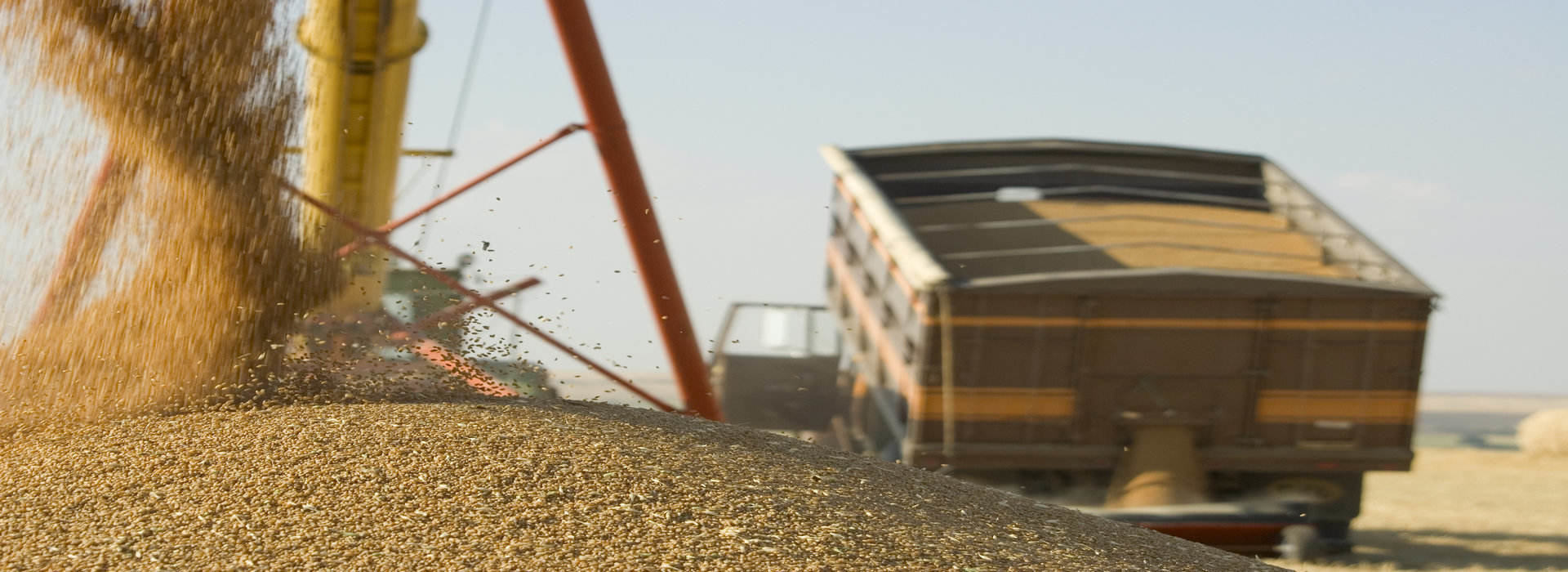
Grain Bag Storage Maintenance Tips
Article published on: Oct 10
When dealing with a high volume crop, you may decide that short term storage is best to maintain the quality of your harvest. Grain bag storage is a flexible solution for short term storage of bumper yields. Storing your grain in bags brings the storage method directly to your harvest field. It can be a flexible, cost-effective solution provided certain quality control steps are taken. Site preparation, site maintenance and machine servicing all need to be done properly and timely to ensure your grain holds its quality and value. Below you’ll find tips on the preparation and maintenance steps required to ensure that grain bagging is a successful storage option for your operation.
Site preparation makes for easier maintenance
Selecting the right site for your grain and production is key. It’s best to select a site that is accessible even when the weather is wet, and located in the open to help deter animals. Once an appropriate site has been found, preparing the site is the first step required to set yourself up for easier maintenance.
First, remove any debris such as sticks or sharp objects, then grade the site and ensure the ground is firmly rolled to prevent the grain bags from sinking or water pooling around them. Anything that will hurt your bags needs to be removed from the area. If possible, spray the site with a rodent deterrent to prevent mice and vermin from burrowing under the bags once laid. New to the market are bags which are ‘infused’ with bird and rodent repellent, consider these options if your sight requires; https://www.protexia-plast.com/bags & https://www.agrirepel.com/agrirepel-bag. If proper preparation is not completed, then the bag may not be impervious to air or liquid and can lead to grain spoiling.
Site maintenance once bags are laid and full
The biggest threat to the filled grain bags is animals, especially during the winter months. Animals can do a lot of damage in a short amount of time. In winter months, snow can create drifts for deer to climb onto the bags, however, using pallets at the ends can deter them. Year-round, mice pose the biggest risk to the bags as they are known to burrow under, weakening the soil and allowing water to pool, and also chewing through the bag material causing wastage and grain spoilage. Regular poisoning of the ground around the bags ensures no mice or vermin ruin the stored harvest. Installing bait stations along each side can also help, but signs warning people of the poison is strongly encouraged. Clean up and thorough removal of spilled grain after filling will help reduce insects as well as removes animal attractants.
Bird damage is another threat that ongoing site inspections and bag maintenance can help prevent. Birds like to land on the bags, pecking bags to access insects stored within the grain. Using Bag Armor is one of the best methods of preventing bag damage, https://www.flamanagriculture.com/grain-bag-armour-p592. Installing baler mesh around the bags can help prevent them from landing. Putting round bales around the bagging perimeter, stacked higher than the bags, can attract birds to this higher landing site and away from your stored grain bags. An electric fence – or any sturdy fence if an electric isn’t wanted – can be used to keep bears away and potentially deer if high enough and positioned so they can’t jump over it. Spraying the site regularly to remove grass cover helps keep the area clean and open – not appealing to mice or wildlife.
Regular inspections of the bags are needed to ensure no damage from animals, weather or insects. During wet weather, if the number of mice and vermin are up, then checking on your bags daily may be required to ensure they stay unharmed. In normal weather conditions, check weekly at a minimum. If there are any punctures, rips or other damage visible, patching these with silicone or a high-quality tape prevents moisture from spoiling the grain.
Machine servicing and maintenance
Regular maintenance of the machinery that bags and extracts the grain helps ensure minimal downtime. Reading and following the manufacturer’s manual is key to keeping the machines in top condition. The manuals describe in detail the following mechanisms and their respective maintenance – the driveline, shear bolts, drive chain tension and alignment along with the following items needing servicing – fluids and lubricants, auger wear plates, greasing, and servicing intervals. There is also a section on troubleshooting typical issues that can arise such as augers not running, the machine doesn’t move or low unloading capacity.
For the PRO-Grain bagger, the following are the recommended servicing intervals. 10 hours/daily/every 5 bags: grease the PTO drivelines, unloading auger bearings and the conveyor caster wheels. Every 40 hours/weekly/50 bags: grease the PTO telescoping section, check the conveyor belt alignment and grease the conveyor extend/retract bearings. Annually, check the conveyor flashing, discharge flighting and brake fluid, and clean the machine.
For the PRO-Grain extractor, the following are the recommended servicing intervals. 10 hours/5 bags: grease the PTO driveline. 40 hours/50 bags: grease the bearings. 100 hours: grease the spout position bushings and bag roller anchor bushing, and check both the roller chain tension and gearbox oil. Annually, grease the roller chains and drive couplers and clean the machine. Every two years, change the gearbox oil.
By following the service and maintenance outlined in the manuals, and using the troubleshooting tips identified in the problem-solving section, this will help keep your machines running smoothly.
For more information on grain bagging and equipment, visit our website or contact us today.


